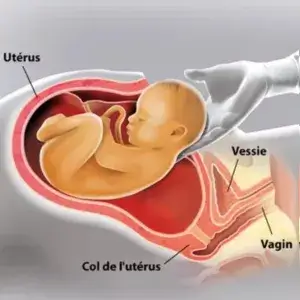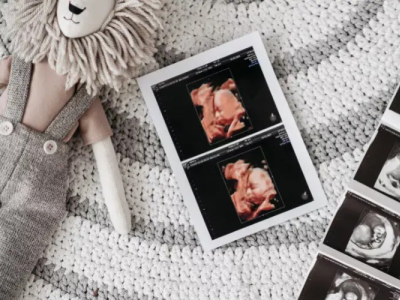
Cesarean delivery
In France, more than one woman in five gives birth to her child by caesarean section (21%), a figure which is in the low average for Europe.

Why do we have a cesarean section?
The decision to perform a C-section is usually made based on the condition of the baby and the mother.
In some cases, the doctor may decide to schedule a caesarean section even before labor begins to protect the health of the baby or the mother.
In others, it is during labor that the decision to caesarean section is taken. This is then an emergency caesarean section.
Emergency Cesarean

The following are the reasons why the decision to perform a C-section is usually made after labor begins:
- No progress in labor. This is the most common reason for having a caesarean section. This means that the mother's cervix stops dilating for several hours or the baby does not descend through the pelvis and vaginal canal in preparation for birth, even though the mother has normal, regular contractions. If other methods used to advance labor do not work, then a caesarean section is necessary.
- Concerns about the well-being of the baby. This is the 2nd most common reason for having a caesarean section. The main concern is usually unusual changes in the baby's heart rate during labour. When the baby's health seems threatened and the birth is not imminent, a caesarean section may be recommended.
- The placenta separates from the uterus (placental abruption)</ strong>. The placenta must remain attached to the uterus until the baby is born. The premature abruption of the placenta can lead to heavy bleeding and deprives the baby of the oxygen it needs. In such a case, an emergency caesarean section is necessary.

Planned cesarean section
A C-section may be planned for reasons related to the baby, for example:
- The position of the baby. In about 3% to 5% of pregnancies, the baby presents through the forehead, face, buttocks, feet, and even through the shoulder instead of the head. Thus, it happens that the position adopted by the baby is not favorable to a vaginal delivery. The doctor may then try to perform a version to turn the baby upside down at the 36th or 37th week of pregnancy. However, sometimes the maneuver does not work or it is not possible to perform it for certain medical reasons. In this case, a caesarean section can be planned.
- The size of the baby A caesarean section. is needed if the health professional feels that the baby is too big for the diameter of the mother's pelvis.
- The growth of the baby. If the baby is severely stunted, it may sometimes be necessary to perform a caesarean section in order to deliver the baby before the expected date.
A caesarean section may also be planned for reasons related to the mother, for example:
- A previous birth by caesarean section. It used to be said, “Once a caesarean, always a caesarean”, but that adage is no longer necessarily true today. The decision to perform a second caesarean section depends on the reason the first one was performed as well as the type of incision that was made. Today, 60% to 80% of mothers who have already given birth by caesarean section will be able to give birth vaginally in a future pregnancy.
- Problems with the placenta. On the first ultrasound, the placenta may cover the opening of the cervix. Then, it can rise during pregnancy and thus no longer hinder the baby's passage through the vaginal canal. However, a caesarean section must be planned if part of the placenta still covers the cervix (placenta previa) at the time of birth.
- The state of health of the mother. A caesarean section is sometimes necessary if the mother has a high blood pressure disorder such as preeclampsia, a heart condition, or diabetes that has caused the baby to be overweight, which can make it difficult for the baby to pass through the pelvis from the mother.
- Different types of infection. Cesarean section may be required when the mother has an infection. For example, if the mother has active herpes lesions on the vulva or vagina, a caesarean section should be planned to prevent the baby from becoming infected during delivery. Similarly, an HIV-infected mother could transmit the virus to the baby during childbirth. A caesarean could be considered to protect the health of her child.
- Non-medical reasons. Some women ask their doctors to give birth by caesarean because of their fear or anxiety about labor. In these circumstances, the healthcare team will assess the mother's reasons for requesting a caesarean section. Each situation is analyzed individually in order to best meet the needs of each woman. When it comes to the fear of pain, several possible solutions can be offered to the mother to reassure and relieve her before considering a surgical procedure such as a cesarean section.
What there is to know

In general, caesarean sections go well. However, like all surgeries, this intervention can have consequences on the recovery of the mother.
The future dad is not authorized, in the vast majority of situations, to stay during the childbirth.
Breastfeeding can be done, but a delay of about 10 hours after childbirth must be expected.
An epidural anesthesia is performed in the majority of cases.
It is customary to consider 3 to 4 caesarean sections at most because of the risks associated with the scar.


